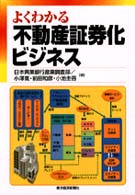Full Description
Postpartum haemorrhage is excessive bleeding after childbirth. The most common cause is the separation of the placenta from the uterus, but other causes include cervical lacerations, a large episiotomy or a ruptured uterus.
Part of the World Clinics: Obstetrics & Gynecology series, this new volume is a comprehensive guide to postpartum haemorrhage. Beginning with a list of useful abbreviations, the book covers both primary and secondary causes of the condition, describing both surgical and non-surgical management techniques.
With contributions from many UK-based specialists, this manual includes WHO (World Health Organisation) and FIGO (International Federation of Gynecology and Obstetrics) protocols and recommendations.
Key points
New volume in World Clinics: Obstetics & Gynecology series
Covers surgical and non-surgical treatment of primary and secondary causes of postpartum haemorrhage
Includes WHO and FIGO protocols and recommendations
Many UK-based contributors
Contents
Foreword
Editorial
Abbreviations
First Response Management
Managing Vaginal Tears
Cervical Tears
Supra- and Infralevator Hematomas
Morbidly Adherent Placenta
Postpartum Sepsis
Uterine Ecbolics
Nonsurgical Tamponade
Surgical Tamponade
Uterine and Internal Iliac Artery Ligation
Role of Interventional Radiology and Uterine Artery Embolization
Major Obstetric Hemorrhage and Blood Transfusion
Blood and Component Therapy
Sheehan Syndrome and Life after PPH
Role of Simulation Training
Audit and Clinical Governance in PPH
Appendix A: WHO Guidelines for Active Management of Third Stage of Labor
Appendix B: MamaNatalie—A New PPH Training Simulator
Appendix C: WHO Recommendations on Prevention and Treatment of Postpartum Hemorrhage
Appendix D: FIGO Recommendations for the Prevention and Treatment of PPH
Appendix E: Obstetric Emergency Box— Saves Time, Saves Hands and Saves Lives








